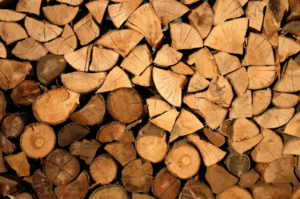When it comes to building sustainably, innovative wood materials are at the forefront of green construction. You may not realize how these eco-friendly materials can transform your projects while reducing your carbon footprint. This blog post is going to explore some key facts that highlight the benefits and importance of incorporating these products into your construction plans.
Sustainable Sourcing
Innovative wood materials play a crucial role in green construction, particularly through sustainable sourcing practices. These high-quality wood products are often derived from responsibly managed forests, ensuring that harvesting methods do not deplete resources or harm ecosystems. By utilizing reclaimed or recycled wood, builders can significantly reduce waste and the need for new materials, further lowering their environmental impact. Sustainable sourcing not only promotes biodiversity but also supports local economies that depend on forest management.

Additionally, many innovative wood materials are engineered for enhanced durability and efficiency, which translates to longer lifespans and reduced maintenance needs. This holistic approach to sourcing transforms the construction industry by making it more sustainable and eco-conscious, ultimately contributing to a healthier planet and society.
Engineered Products
Engineered wood, such as cross-laminated timber (CLT) and laminated veneer lumber (LVL), is revolutionizing green construction by combining sustainability with structural integrity. These materials are crafted from smaller wood pieces bonded together, resulting in products that have high strength-to-weight ratios, making them ideal for various architectural applications. By using fast-growing minimizes reliance on old-growth forests, thus preserving vital ecosystems.
Furthermore, their precision manufacturing reduces material waste during construction and allows for efficient transport and installation. These engineered products also offer excellent insulation properties, contributing to energy-efficient buildings. Overall, their ability to significantly lower carbon emissions during production, coupled with their sustainable sourcing, positions innovative engineered wood materials as a key component in the push towards more eco-friendly construction practices.
Energy Efficiency
Using wood in construction also brings various energy-efficiency benefits that every modern homeowner should be aiming for. This reduces the reliance on non-renewable energy sources, which are often costly and have a harmful impact on the environment. Here are some of them:
- Enhanced insulation
- Reduced thermal budgeting
- Improved air tightness
- Sustainable thermal mass
- Energy-efficient building envelopes
- Low VOC finishes
Innovative wood materials provide superior insulation and reduce thermal bridging. This results in lower energy consumption for heating and cooling, allowing buildings to maintain comfortable temperatures with less reliance on non-renewable energy sources.
Plus, the use of sustainable thermal mass helps to regulate indoor temperatures, contributing to improved overall energy performance. By incorporating these materials, builders can create structures that minimize environmental impact while promoting more sustainable living practices.
Carbon Sequestration
Carbon sequestration is the process of capturing and storing atmospheric carbon dioxide. Trees absorb carbon dioxide during photosynthesis, storing it in their biomass. When these trees are converted into such products, the carbon remains locked within the material, preventing it from re-entering the atmosphere. This long-term storage contributes to reducing greenhouse gas levels and combating climate change.
What’s more, using sustainably sourced wood helps to maintain forest integrity, ensuring that these natural carbon sinks continue to thrive. By incorporating innovative timber products into construction projects, builders not only enhance the sustainability of their buildings but also support a crucial strategy for mitigating climate impacts through effective carbon management.
Reclaimed and Recycled Wood
Innovative timber significantly incorporates reclaimed and recycled wood, which reduces waste and minimizes the need for new resources. Reclaimed wood is sourced from old structures, furniture, or pallets, giving new life to materials that would otherwise contribute to landfills. This practice not only conserves timber but also preserves the unique character and history of the wood, adding charm to modern projects.
Similarly, recycled wood, such as particleboard and engineered lumber, is made from processed wood scraps and by-products, ensuring that every piece of wood is utilized effectively. By integrating these sustainable practices, builders significantly lower their carbon footprint, contribute to resource conservation, and promote a circular economy within the construction industry.
Innovative Treatments and Finishes
Applying high-quality wood materials improves durability and sustainability, crucial for green construction. These treatments can protect wood from pests and moistdly finishes, such as low-VOC (volatile organic compounds) sealants and stains, minimize harmful emissions while preserving the natural aesthetics of the wood.
Further, treatments that enhance fire resistance and improve weather resistance ensure that wooden structures are resilient in diverse environments. By using these innovative treatments and finishes, builders not only preserve the integrity of the materials but also contribute to the overall energy efficiency and sustainability of their projects, making a significant impact on reducing environmental footprints.

Incorporating innovative wood materials into your construction plans not only enhances sustainability but also sets you on a path toward eco-friendly building practices. By prioritizing sustainable sourcing, engineered materials, and effective treatments, you can significantly reduce your carbon footprint while creating structures that are both beautiful and durable. Embrace these strategies to contribute to a greener future for our planet.



